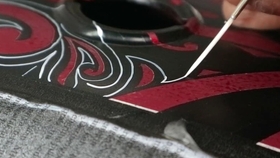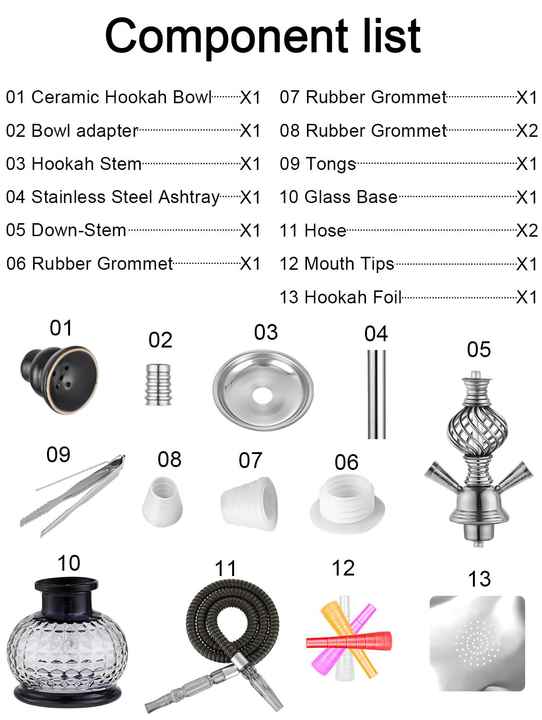Title: How to Compare Customized Metal Components: A Comprehensive Guide
Custom metal components are becoming increasingly popular in the manufacturing industry due to their flexibility and ability to meet specific needs. However, with so many factors to consider when comparing customized metal components, it can be challenging for manufacturers to make informed decisions. In this comprehensive guide, we will provide tips on how to effectively compare customized metal components to ensure you get the best product for your business. We'll cover factors such as material type, design complexity, production time, cost, and quality. Additionally, we'll discuss how to use technology like 3D printing and computer-aided design (CAD) software to streamline the customization process and reduce costs. By following these guidelines, you'll be able to confidently compare customized metal components and make informed decisions that will help your business grow and succeed.
Introduction
In the world of manufacturing and engineering, metal components play a crucial role in ensuring the functionality and durability of products. Custom-made metal components offer numerous advantages, such as increased efficiency, improved performance, and greater flexibility. However, with so many options available on the market, it can be challenging for manufacturers and engineers to choose the right customized metal component. This article aims to provide a comprehensive guide on how to compare customized metal components, covering key aspects such as material selection, design, production process, and cost.

Material Selection
The first step in comparing customized metal components is to consider the material options available. Metals are classified into several categories based on their properties, including strength, toughness, malleability, and corrosion resistance. Some common metals used for custom metal components include steel, aluminum, titanium, and stainless steel. Each material has its unique set of advantages and disadvantages, and the choice depends on the specific requirements of the application. For example, steel is a versatile material that offers high strength and durability but is prone to rust; stainless steel, on the other hand, is highly resistant to corrosion but can be expensive.
Design
The design of the customized metal component is another crucial aspect to consider when comparing different options. Design considerations include shape, size, configuration, and surface finish. The design of the component should take into account factors such as load-bearing capacity, ease of assembly and disassembly, and aesthetics. Additionally, some customization options may include adding or removing features, such as holes or slots, to meet specific requirements. It is essential to work closely with a skilled engineer or designer to ensure that the final design meets all necessary specifications and performance criteria.
Production Process
The production process also plays a significant role in determining the quality and cost of a customized metal component. The production process can vary depending on the type of metal used, the design of the component, and the level of customization requested. Some common production processes used for customized metal components include stamping, welding, bending, machining, and assembly. Each process has its own set of advantages and limitations, and the choice depends on the specific requirements of the application. For example, stamping is a cost-effective method for producing large quantities of identical components, while welding is ideal for creating complex shapes and joints.
Cost Comparison
Finally, comparing costs is an essential aspect of choosing a customized metal component. The cost of a component includes both the initial price of materials and labor involved in production. Factors that can affect cost include material availability and demand, production volume, design complexity, and production process. It is crucial to obtain quotes from multiple suppliers to ensure that you are getting the best value for your money. Additionally, some customization options may increase the cost compared to off-the-shelf components due to additional labor or specialized equipment required for production.
Conclusion
In conclusion, comparing customized metal components requires careful consideration of various factors such as material selection, design, production process, and cost. By working closely with experienced engineers and designers and obtaining quotes from multiple suppliers, you can make an informed decision on the best customized metal component for your application. Remember that customization may come at a higher cost compared to off-the-shelf components, but it can also offer greater flexibility and improved performance in some cases.
Articles related to the knowledge points of this article:
Title: Crafting Custom Gold Necklaces: The Art of五金加工
Title: The Art and Science of Customization in CNC Hardware Processing in Henan Province
Title: Crafting Custom Lighting Hardware in Qingyuan: A Masterclass in Metalworking and Assembly
Title: Custom Metal钩子五金制品制造商 - 深圳工厂
Title: Customizing Hardware Solutions in Guiyang: A Masterclass in Quality and Efficiency



